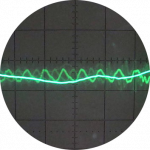My Journey to Finding the Best Heat Pump for My Home in France
Hello,
Since the start of this winter, I decided that 2025 would be the year to replace our gas boiler (a basic one, not a condensing model) with a heat pump. When the boiler runs, I hear cracking noises from the wall where the exhaust gases exit, and the pipes make noise when hot water flows after the boiler has been off. Sometimes, it even wakes me up at night. Since the boiler is already reaching the end of its life, I thought now was the right time to make the switch.
This led me to watch and read everything I could find about heat pumps. I discovered a fascinating world! After watching several French videos, I found a ton of content from the UK. Of course, I came across Heat Geek videos, Renewable Heating Hub videos/podcasts, and discovered heatpumpmonitor.org.
As you can probably tell from my English, I'm living in France. After getting multiple quotes, I realized there is a huge gap between installers here in France and the ones I see on YouTube in the UK (though I might be biased since I only see UK installers via YouTube).
About the House:
- Year built: 1989
- Size: 130m² (two floors + basement)
- Insulation: 10 cm on the walls, and I'm planning to add over 35 cm of insulation in the attic
- Annual gas consumption: ~11,250 kWh
- Radiators: Most are T11, but I am replacing them with T22 and larger sizes when possible
- Current sizes: 2 × 900 × 1000, 2 × 600 × 1000, 4 × 600 × 600, 1 × 700 × 600
- Only the bedroom radiators (3) have TRVs (already replaced with T22 models)
- Pipework: "Monotube" (not sure if this exists in the UK, as it's not common in France either)
- One single 16mm (external diameter) copper pipe runs from the heat source to the first radiator, then the outlet of the first radiator connects to the inlet of the next one, and so on.
- I have two separate loops (one for each floor).
- Each radiator has a 4-way balancing valve at the inlet to help balance the system.
- Heat loss (calculated by installers): Between 5.8 and 7.4 kW at -5°C
- Based on my gas consumption, my own estimate is around 5.5 kW (not accounting for the inefficiency of my gas boiler).
Installers & Heat Pump Options:
Vaillant:
After watching YouTube videos from the UK, it seems that many people are happy with their Vaillant installations. However, I don’t really understand why most installations on YouTube feature Vaillant—maybe it’s just marketing?
I contacted Vaillant via their website, and they referred me to an installer 30 minutes away from my home. That surprised me since I live near a large city. It felt strange that no one nearby installs Vaillant.
I was initially interested in the Arotherm Plus (R290), but the installer wanted to install the Arotherm Split (R32) instead (still waiting for the quote).
Mitsubishi (Eco Inverter 8kW):
Pros: Great performance (flat power curve, good COP), decent community support.
Cons: Design (Eco Inverter 8), R32 refrigerant, outdated phone app & user interface, higher price (€14,500).
Panasonic (Aquarea L 7kW):
Pros: Better COP than Mitsubishi, modern design, R290 refrigerant, good phone app, recommended by 3 installers, lower price (€11,500).
Cons: Almost no user feedback available (which is a bit concerning).
Viessmann (Vitocal 151A 6kW):
Pros: Great design, R290 refrigerant, good phone app.
Cons: Expensive (€18,000).
The Buffer Tank Debate:
All installers insist on adding a 4-port buffer tank (2 connections for the heat pump, 2 for the radiators). Even when I show them articles proving that buffer tanks reduce heat pump efficiency, they still want to install one.
Their reasons:
- "We don’t know how your pipe network will behave."
- "It helps during defrost cycles."
- "It ensures the system volume is sufficient for the heat pump."
- "It prevents the heat pump from short cycling."
- "It improves performance by maintaining a ΔT of 5K."
To me, it just seems like they want to install something that will work in any case rather than designing a system for optimal efficiency.
I could accept a buffer tank if they gave me a real, mathematical reason—like if my pipes were too small or if there were another proven issue. But so far, none of them have given a solid explanation.
Why I'm Posting Here:
1. Which heat pump would you choose?
- The Panasonic Aquarea L seems like a good option, but the lack of feedback makes me hesitate.
2. Do you think my "monotube" pipe network can work without a buffer tank?
My Ideal Heat Pump Would Be:
- Good design
- High efficiency
- Easy integration with Home Assistant (without requiring cloud access)
- Reliable
- Able to consume excess solar PV production
- Uses R290 refrigerant
Sounds like you have done a lot of research, in general the performance of a heat pump takes a very long 2nd place compared to system design, so should be of secondary importance.
What you have described of your experience with installers in France is the same as a lot of installers here.
As you have highlighted from your research, if they want to install a buffer, run away, they want a simple swop out for your boiler with no issues that requires zero system design.
Your 16mm pipework is likely to be an issue, but until you find an installer that will actually do a decent review of your heating system you won't know.
If it were me I would keep talking to different installers until you find one that actually knows what they are doing.
Good luck
When I first read this I thought 'no way thats going to work', but then I thought about it more carefully and I think it might. However Im not an expert, just someone with a degree in physics and a background in engineering who has spent 2 years plus studying this stuff. So I know almost nothing, but can (hopefully) think. Sometimes thats an advantage!
You are definitely right not to trust the installers particularly when they give you a scattergun explanation, which means that they dont actually know.
Lest start with the monotube, radiators wired in series. Im working from first principles here, someone else may have more knowledge.
In essence what you have is 2 3kW distributed emitters one for each floor. Im working on 6kW total loss and the assumption that the floor demands are about the same. The 4 way balancing valve presumably acts as a partial bypass but it feels like it would be a nightmare to get this balanced particularly if you also add in TRVs. So to first order I think they should be treated as a whole, much like UFH is.
The rads will be at different temperatures, which complicates the calculations. Presumably French plumbers are used to that, but it makes a much greater difference at a FT of say 45 than it does at an FT of say 70. For example suppose there are 5 rads in series each with a DT of 1C making 5C in total, and you have an FT of 45. A radiator at the far end will emit 13% more energy than a same sized radiator at position 1 in the series. Not too bad actually (probably no more than the uncertainty in the heat demands of the rooms) but worth calculating. This will also have a subtle effect on the WC curve (more so if you operate at a very low FT like 35). Of course this is less important if the building is in practice open plan, ie doors between major rooms are generally left open.
So lets go back to the view that each floor is one 3kW emitter. 15mm is good for 2.75kW at DT5 https://www.heatgeek.com/does-my-pipework-need-upgrading-for-a-heat-pump-with-cheat-sheet/. So with eg 5 rads on any one floor each would operate at DT1, you would have a total DT of 5, and your 16mm pipework would suffice provided you can take 22mm pipework to the point the two floors divide. That is beginning to sound like the basis of a plan!
Now lets look at the 'reasons' for a 4 port buffer tank:
- "We don’t know how your pipe network will behave." - well you should if you did some simple maths like that I did above. Perhaps you could even calculate the index circuit? I would guess its unlikely to be a problem, the floor area isnt so large so pipe runs are presumably fairly modest.
- "It helps during defrost cycles." - so does a volumiser (2 port buffer), without any of the downsides
- "It ensures the system volume is sufficient for the heat pump." - same as above
- "It prevents the heat pump from short cycling." - same as above
- "It improves performance by maintaining a ΔT of 5K." If the heat pump wants to maintain a DT of 5 it will likely do so by modulating the water pump. If it doesnt want to it need not and obviously the pump designers decided it wasnt necessary
So I dont think there is any convincing reason for a buffer tank, subject to confirming that the water pump has sufficient head (which is likely given the size of the property).
As to choice of manufacturer, @gary is right, system design matters more. However:
@johnmo has a Panasonic (I think) and regularly raves about it. They dont seem to be that common in the UK, I suspect because they dont have a well established dealer network.
Mitsubishi are one of the most popular brands and have a good reputation.
Vaillant also have a good reputation and have a particularly easy to use and flexible UI (at least to the extent I can tell from reading the various instruction manuals and my personal experience of Vaillant which is what I have). However there has recently been some bad press about the 7kW model, excess compressor noise during defrost and about capacity in this thread on openergymonitor.
I cant really comment on Viessmann, but they seem to have a good reputation albeit they are expensive at least in the UK
TBH I doubt any of these are a bad choice, its the system design that matters.
Split vs mono is debatable. The advantage of a split is you dont have water outside (unless its a 'hydrosplit' - where you do) and the outdoor unit is usually smaller, but the plumber needs f-gas and there is some internal noise. Our domestic plumbers dont generally have that and the commercial boys, who do, are only interested in A2A. So splits are rare here.
Finally, as you are in France, you perhaps dont have to sweat quite so much as we do about efficiency, because your electric prices are so low.
Hope that helps
4kW peak of solar PV since 2011; EV and a 1930s house which has been partially renovated to improve its efficiency. 7kW Vaillant heat pump.
- 26 Forums
- 2,338 Topics
- 52.8 K Posts
- 300 Online
- 5,994 Members
Join Us!
Podcast Picks
Latest Posts
-
RE: What a Bad Heat Pump Installation Looks Like
@cathoderay There is always the 7.62 1in5 link of socia...
By Grantmethestrength , 2 hours ago
-
-

RE: Home energy storage & battery register
Now the proud owner of: 4.1Kw peak Aiko Neostar solar...
By TechnoGeek , 4 hours ago
-

RE: The good, the bad and the not that great – my heat pump installation
I did, thanks, and thanks to for reminding me I should ...
By cathodeRay , 5 hours ago
-
RE: Latest NIBE model has known defect and no solution
@kings I don’t I’m afraid as I submitted it through my ...
By richardpool , 6 hours ago
-
-
RE: Aira Heat Pump: Stylish Scandinavian Heating
Aira called me back today, but not sure we got to the a...
By ChandyKris , 11 hours ago
-
RE: Replacing my 18 month old Hitachi Yutaki ASHP
That level of cycling is normal and absolutely nothing ...
By JamesPa , 15 hours ago
-
RE: Havenwise App Help & Forum Support – Get the Most from Your Heat Pump
@hcas Hello Henri. It is disappointing, but I must pres...
By DavidAlgarve , 1 day ago
-
RE: Experience with Mitsu Par 50/60 Wireless Controller
The 27°C request doesn't boost the weather compensation...
By Sheriff Fatman , 2 days ago
-
RE: Getting the best out of a heat pump - is Homely a possible answer?
Oh and it was installed by Stevie Wonder!
By Grantmethestrength , 2 days ago
-
There seems to be plenty of evidence to support this. ...
By JamesPa , 3 days ago
-
RE: One Year Review: Grant 13kW ASHP - A Catalogue of Errors
@solenoid it sounds like you are making progress. No n...
By JamesPa , 3 days ago
-
RE: How good is the app support for your heat pump?
I think you are right about the ebus stick. It's cert...
By JamesPa , 3 days ago
-

RE: My DIY Heat Pump installation
@majordennisbloodnok Element-ary my Dear Major.
By Toodles , 3 days ago
-

Welcome to the forums @isaac. What you’re describing is...
By Mars , 4 days ago
-

Win an Eve Smart Home Bundle worth over £350!
Win an Eve Smart Home Bundle worth over £350! ...
By Mars , 4 days ago
-
RE: Is your heat pump insured?
I chose Tesco in the end. Unambiguously cover HP, PV an...
By Davesoa , 4 days ago




